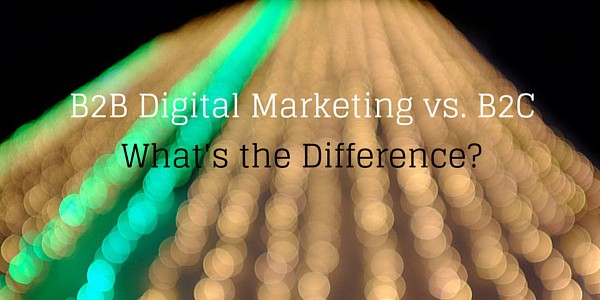
A great marketing strategy for any business focuses on how to create, distribute, and track buyer-centric content. But B2B digital marketers face a unique challenge that B2C does not—taming content chaos.
Let me explain.
In B2B, the buying cycle is longer, strategies and processes are more complex, and multiple decision makers influence the content lifecycle. Simply put, there are a lot of cooks in the kitchen, and they are all significant to the pace and success of a purchase.
It’s not enough for B2B digital marketers to use one type of content to target all buyers within an organization. B2B digital marketers need to target multiple buyers within a single organization over a multi-stage sales cycle, and across channels owned by different teams. To pull this off takes diligent planning, communication, and alignment across internal stakeholders.
In addition, nearly half (43%) of B2B buyers said the number of people involved in purchase decisions has grown significantly, and that trend is rising.
As a digital marketer, how do you find a way to please everyone and still make headway within the sales funnel? By working strategically across your organization to deliver the right content to the right people, through the right channels.
Three Things B2B Digital Marketers Can Do to Get Ahead:
Simplify the buyer’s journey, right now.
The buyer’s journey becomes more complex than B2C because internal stakeholders across the company are not communicating clearly, or in agreement on which digital marketing content works best for each step of the sales cycle. This generates confusing documentation, mixed results on what material is most effective, and wastes a lot of time, energy, and resources.
Remember, propelling a lead through the sales pipeline is not a one-man job in the B2B digital marketing world. To shift into a more efficient content lifecycle, and remove frustration between teams, make things as clear and as easy as possible. Define and agree on what your buyer’s journey and sales stages look like, and then map associated content to each step as a combined team effort.
Cohesive, ongoing collaboration between all internal teams and team members provides a closed-loop strategy that’s consistent company-wide, and gets you past bumps in creating digital content for a single, more effective, buyer’s journey.
Craft buyer personas to sell to multiple stakeholders more efficiently.
Unlike B2C sales, B2B marketers have to address several personas within a single sale. Each persona has unique information needs, goals, and concerns related to the purchase, and each one often joins the decision-making process at different stages. Clear, defined buyer personas make it easier to align specific packages and features with key customer pain points and keeps the sales pipeline moving.
In order to create digital marketing content that addresses the pain points of each type of buyer at every stage of the buying cycle, you need insight from content stakeholders. Gather information from sales representatives and the customer service team, as well as customers, to craft buyer personas that map to a singular, clear buyer’s journey and clearly document what content converts so other team members can use it as a reference.
Manage and coordinate cross-channel engagement with clear timelines and streamlined distribution.
For even the savviest, most experienced B2B digital marketers, integrating and coordinating a matrix of marketing technologies can seem like a living nightmare. Between marketing automation, CRM, CMS, and social media channels, the content lifecycle is never ending.
A study by the Content Marketing Institute also found nearly half of all marketers are publishing new content weekly, which means even more planning and content clutter to organize into the appropriate digital marketing channel.
As a first step, clearly define all the digital channels you will use to distribute B2B content, including email, corporate blog, paid advertising, and specific social media channels. Integrate social with your marketing content strategy by breaking down larger content assets into bite size pieces, and map social outreach to buyer personas.
Find an online marketing tool to track what content pieces and campaigns are successful and which ones flop in order to measure effort vs results. Time content within key digital marketing channels to align with a release, email campaign, conference, or industry announcement and be sure to target key buyer personas.
While B2B digital marketing has unique challenges compared to B2C marketing, there’s a way to turn those “challenges” into a smooth, well-orchestrated buyer’s journey.

